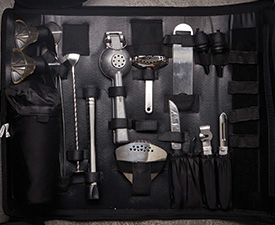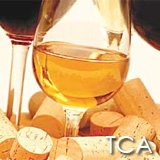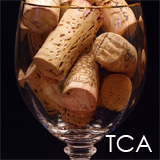TCA as it is commonly known - is a small and chemically simple molecule, which is very potent to the senses. TCA can be detected in dry white wine and sparkling wines at levels around two parts per trillion (0.000000000002 grams in a litre of wine), and in red and port wines at around five parts per trillion.
Such low concentrations are difficult to conceptualise but it is similar to one teaspoon in a couple of thousand Olympic sized swimming pools. A single gram of pure TCA could badly taint the entire volume of wine produced in Australia each year. The other less common contributors to cork taint are not much better having sensory thresholds of around 20 parts per trillion.
TCA is the natural compound that at higher levels can impart 'musty, tired, dull' flavours and aromas to wines. Wines that contain TCA at a detectable level are described as either being "corked" or having "corkiness."
Cork is a major source of TCA in bottled wine, although experts indicate that TCA in wine may be derived from sources other than cork, such as from wood barrels.
Wineries in most wine-producing countries, along with the cork industry, continue their research efforts to minimize the presence of TCA in wine.
There is no conclusive evidence that wines that exceed any particular level of TCA will result in detectable negative characteristics for any significant segment of the wine-drinking public. Many award-winning wines contain levels of TCA that are detectable by instruments but not by consumers. There is no single, fixed level of TCA that distinguishes a 'good' wine from a 'bad' wine.
Perception of TCA by consumers is governed by many variables, including alcohol content, wine characteristics, and the sensitivity of the consumer. The consumer threshold of perception of TCA varies dramatically according to experience and inherited genetic capabilities. Research material indicates that the existence of minute traces of TCA in quality wines does not 'always' impair product quality experience.











